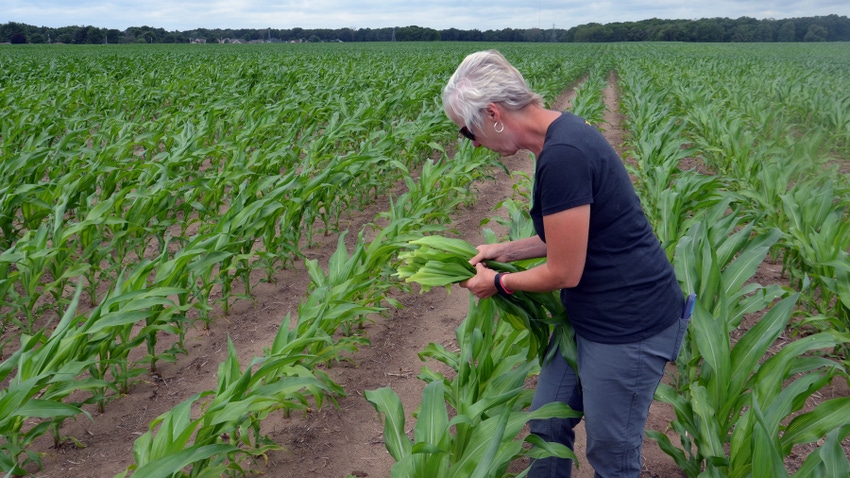
Betsy Bower works with farmers who push for top economical corn yields. One tool Bower, an agronomist with Ceres Solutions, suggests is tissue testing. As a minimum, she likes to see three sampling times per season — ideally at V5, V12 to V14 and R1.
“Pulling tissue samples is a lot of work, especially when corn is over your head and it gets hot,” Bower acknowledges. “And it costs money to have samples tested.
“So, if you’re going to the trouble of doing it, study results carefully. It’s not an exact science, and not everything makes sense every time. But if you stick with it, you can pick up trends that can guide you toward adjustments in your cropping program.”
Some adjustments can be made immediately once you get results, she notes. For example, if a field is critically short on nitrogen, even at V12, you could apply more N. Other times, however, the results may be useful in detecting trends and considering changes for the next growing season.
Prepare for new season
Here are three examples of results based on evaluating tissue samples from the Corn Watch ’22 field after harvest. Corn Watch ’22 was sponsored by Seed Genetics Direct. Ceres Solutions covered costs of tissue sampling at the V5, V12, R3 and R4 stages. The R4 test was added because it was still extremely dry when samples were pulled at R3, Bower explains.
Low zinc levels. Zinc levels tended to run low in 2022, especially early and late in the season. “We noticed this the year before as well,” Bower says. “Once you pick up a trend, it pays to ask questions. The grower is applying a commercial zinc product off the planter.
“It’s possible the rate isn’t sufficient for his situation. One option would be to up the rate. Ideally, he could up the rate in strips and compare to his standard rate.”
Suspect phosphorus levels. Phosphorus levels tended to run lower than average during most of the season in the Corn Watch ’22 field. Potassium levels were somewhat more stable. The grower reports that his soils have tested high in phosphorus in the past. However, samples taken more recently by a different soil consultant have been more inconsistent for phosphorus.
Coupled with inconsistent tissue sampling results, it’s reason to examine phosphorus levels with further testing to see if it’s an issue or just a quirk of testing.
Nitrogen levels. Nitrogen levels were lower than Bower would expect to see for the amount applied. “It’s not unusual to see lower test results for nitrogen when it’s very dry,” she says. “That’s why we pulled samples again at R4 after substantial rains.”
In this case, nitrogen levels were still lower at R4. The complicating factor, however, was that corn was deeper into grain fill by then, which puts more pressure on nitrogen demand.
“The nitrogen-to-sulfur ratio was good throughout the season, and we put a lot of emphasis on that reading,” Bower says. “If that ratio gets out of whack, then we get concerned.”
Because the ratio was favorable and yields were in the 235-bushel-per-acre range, Bower concludes there is likely no need to adjust the nitrogen program based on tissue test trends.
Read more about:
Tissue TestingAbout the Author(s)
You May Also Like




